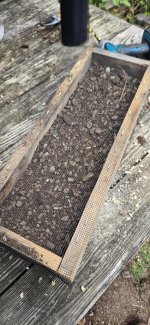finnisferal
Seed
i'm new to bonsai trees and i just bought a bunch of random seeds to try and grow. i will list them below and hopefully someone will have some advice for how to bonsai them. i'm aware that some or all of these trees may be difficult to bonsai or might not survive at all. i just want to learn
species:
coffee arabica (arabica coffee shrub)
arbutus menziesii (pacific madrone)
sequoiadendron giganteum (giant sequoia)
eucalyptus deglupta (rainbow eucalyptus)
tsuga canadensis (eastern hemlock)
ginkgo biloba (ginkgo tree)
i'm in illinois zone 6 and they will be started indoors. i'll take advice on practically anything but i'm looking for specifics on stratification, growing medium, how they tolerate pruning, and any relevant experience regarding these species. have at it (and be nice.)
species:
coffee arabica (arabica coffee shrub)
arbutus menziesii (pacific madrone)
sequoiadendron giganteum (giant sequoia)
eucalyptus deglupta (rainbow eucalyptus)
tsuga canadensis (eastern hemlock)
ginkgo biloba (ginkgo tree)
i'm in illinois zone 6 and they will be started indoors. i'll take advice on practically anything but i'm looking for specifics on stratification, growing medium, how they tolerate pruning, and any relevant experience regarding these species. have at it (and be nice.)



